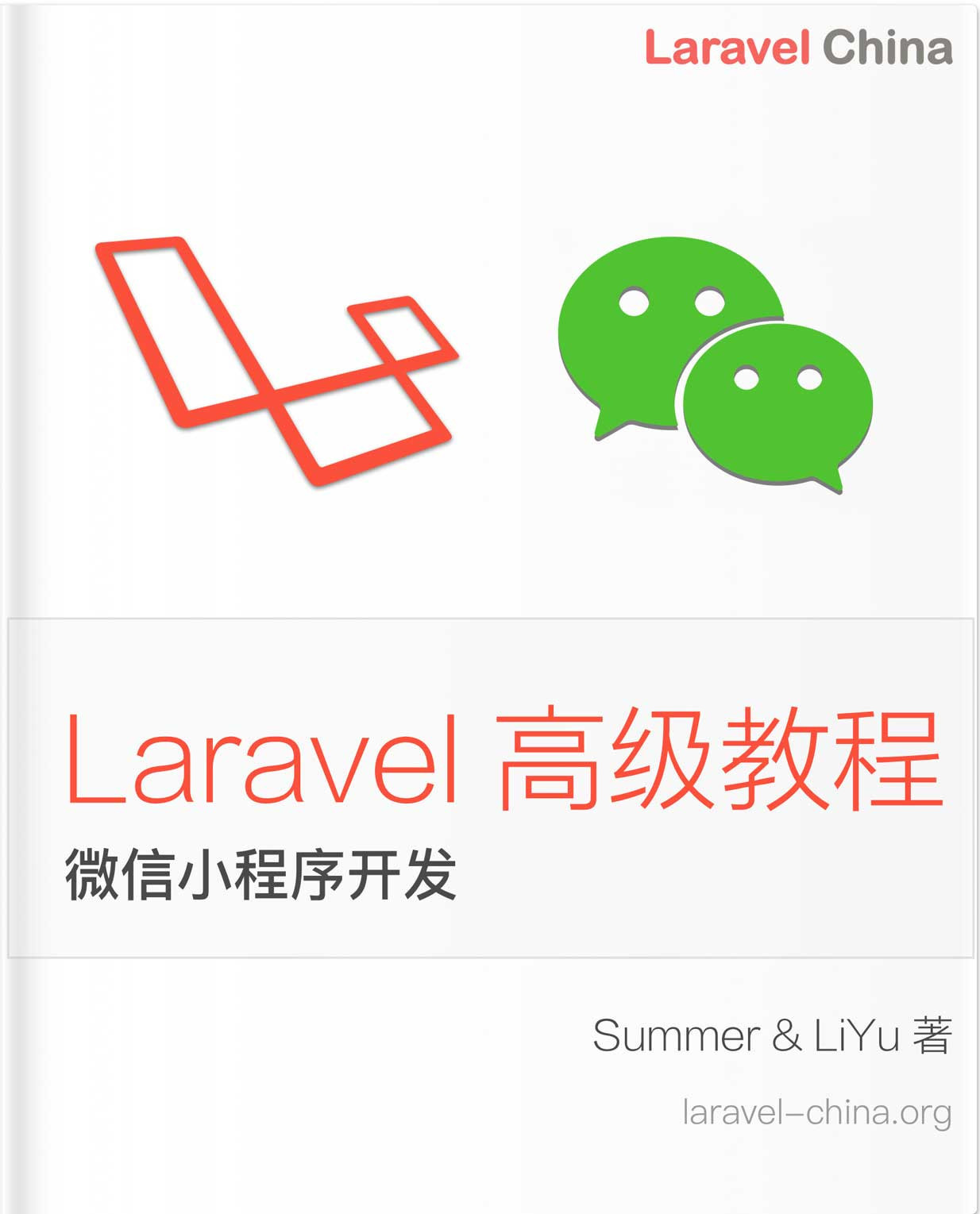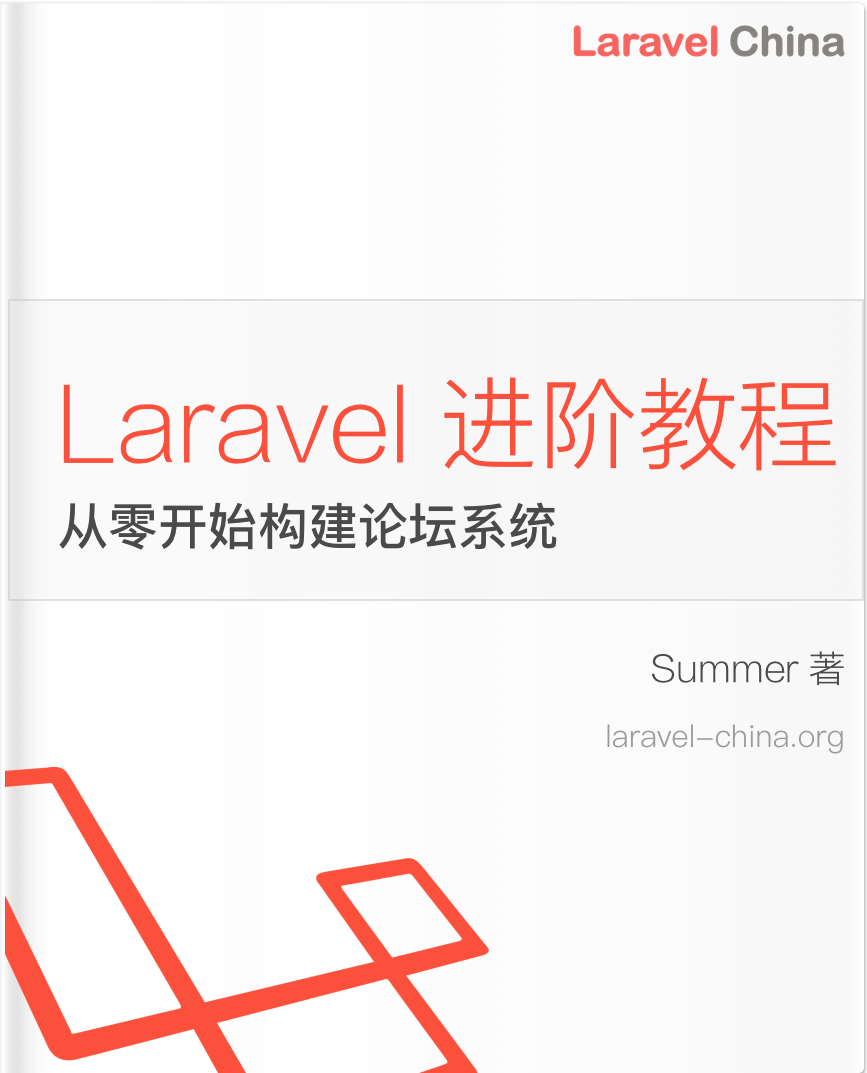服务容器
服务容器
简介
Laravel 服务容器是一个用于管理类依赖以及实现依赖注入的强有力工具。依赖注入这个名词表面看起来花哨,实质上是指:通过构造函数,或者某些情况下通过「setter」方法将类依赖「注入」到类中。
我们来看一个简单的例子:
<?php
namespace App\Http\Controllers;
use App\Services\AppleMusic;
use Illuminate\View\View;
class PodcastController extends Controller
{
/**
* 创建一个新的控制器实例
*/
public function __construct(
protected AppleMusic $apple,
) {}
/**
* 展示给定播客的信息
*/
public function show(string $id): View
{
return view('podcasts.show', [
'podcast' => $this->apple->findPodcast($id)
]);
}
}在此示例中,PodcastController 需要从数据源(如Apple Music)检索播客。 因此,我们 注入 一个可以检索博客的服务。 因为服务是被注入的,所以我们可以很容易地“模拟”,或者在测试应用程序时创建一个AppleMusic 服务的虚拟实现。
深入理解 Laravel 服务容器,对于构建一个强大的、大型的应用,以及对 Laravel 核心本身的贡献都是至关重要的。
零配置解决方案
如果一个类没有依赖或只依赖于其他具体类(而不是接口),则不需要指定容器如何解析该类。 例如,你可以将以下代码放在 routes/web.php 文件中:
<?php
class Service
{
// ...
}
Route::get('/', function (Service $service) {
dd($service::class);
});在这个例子中,访问应用程序的 / 路由将自动解析 Service 类并将其注入到路由的处理程序中。这是一个有趣的改变。这意味着你可以开发应用程序并利用依赖注入,而不必担心臃肿的配置文件。
值得庆幸的是,在构建 Laravel 应用程序时,你将要编写的许多类都可以通过容器自动接收它们的依赖关系,包括 控制器, 事件监听者, 中间件等等。此外,你可以在 队列 里的handle方法中键入提示依赖项。一旦你尝到了自动和零配置依赖注入的力量,你就会觉得没有它是不可以开发的。
何时使用容器
得益于零配置解决方案,通常情况下,你只需要在路由、控制器、事件监听器和其他地方键入提示依赖项,而不必手动与容器打交道。例如,你可以在路由定义中键入 Illuminate\Http\Request 对象,以便轻松访问当前的请求对象。尽管我们不必与容器交互来编写此代码,但它在幕后管理着这些依赖项的注入:
use Illuminate\Http\Request;
Route::get('/', function (Request $request) {
// ...
});在许多情况下,多亏了自动依赖注入和 facades,你在构建 Laravel 应用程序时,无需手动绑定或解析容器中的任何内容。 那么,什么时候你才会手动与容器打交道呢? 让我们来看看下面两种情况。
第一种情况,如果你编写了一个实现接口的类,并希望在路由或类的构造函数中键入该接口的提示,则必须 告诉容器如何解析该接口。第二种情况,如果你正在 编写一个 Laravel 包 并计划与其他 Laravel 开发人员共享,那么你可能需要将包的服务绑定到容器中。
绑定
绑定基础
简单绑定
几乎所有的服务容器绑定都将在服务提供者中注册,因此大多数示例将演示在该上下文中使用容器。
在服务提供商中,你总是可以通过 $this->app 属性访问容器。我们可以使用 bind 方法注册绑定,传递我们想要注册的类名或接口名以及返回类实例的闭包:
use App\Services\Transistor;
use App\Services\PodcastParser;
use Illuminate\Contracts\Foundation\Application;
$this->app->bind(Transistor::class, function (Application $app) {
return new Transistor($app->make(PodcastParser::class));
});注意,我们将容器本身作为解析器的参数接收。然后,我们可以使用容器来解析我们正在构建的对象的子依赖项。
如前所述,你通常会在服务提供者内部与容器进行交互;但是,如果你希望在服务提供者外部与容器进行交互,则可以通过 App facade进行:
use App\Services\Transistor;
use Illuminate\Contracts\Foundation\Application;
use Illuminate\Support\Facades\App;
App::bind(Transistor::class, function (Application $app) {
// ...
});只有在绑定没有注册为指定的类型时,你可以使用 bindIf 方法注册容器绑定:
$this->app->bindIf(Transistor::class, function (Application $app) {
return new Transistor($app->make(PodcastParser::class));
});为方便起见,你可以省略提供你希望注册为单独参数的类名或接口名,而是允许Laravel从你提供给 bind 方法的闭包的返回类型中推断类型:
App::bind(function (Application $app): Transistor {
return new Transistor($app->make(PodcastParser::class));
});[!注意]
如果类不依赖于任何接口,则不需要将它们绑定到容器中。不需要指示容器如何构建这些对象,因为它可以使用反射自动解析这些对象。
绑定单例
singleton 方法将类或接口绑定到只应解析一次的容器中。解析单例绑定后,后续调用容器时将返回相同的对象实例:
use App\Services\Transistor;
use App\Services\PodcastParser;
use Illuminate\Contracts\Foundation\Application;
$this->app->singleton(Transistor::class, function (Application $app) {
return new Transistor($app->make(PodcastParser::class));
});如果你希望仅在给定类型尚未注册绑定时注册单例容器绑定,你可以使用 singletonIf 方法:
$this->app->singletonIf(Transistor::class, function (Application $app) {
return new Transistor($app->make(PodcastParser::class));
});绑定作用域单例
scoped 方法将一个类或接口绑定到容器中,该容器只应在给定的 Laravel 请求/作业生命周期内解析一次。虽然该方法与 singleton 方法类似,但是当 Laravel 应用程序开始一个新的「生命周期」时, 使用 scoped 方法注册的实例将被刷新,例如当 Laravel Octane 工作者处理新请求或 Laravel 队列 处理新作业时:
use App\Services\Transistor;
use App\Services\PodcastParser;
use Illuminate\Contracts\Foundation\Application;
$this->app->scoped(Transistor::class, function (Application $app) {
return new Transistor($app->make(PodcastParser::class));
});你可以使用 scopedIf 方法来注册一个有作用域的容器绑定,只有当绑定还没有为给定类型注册时:
$this->app->scopedIf(Transistor::class, function (Application $app) {
return new Transistor($app->make(PodcastParser::class));
});绑定实例
你还可以使用 instance 方法将现有对象实例绑定到容器中。给定的实例将在后续对容器的调用中始终返回:
use App\Services\Transistor;
use App\Services\PodcastParser;
$service = new Transistor(new PodcastParser);
$this->app->instance(Transistor::class, $service);将接口绑定实例
服务容器的一个非常强大的特性是它能够将接口绑定到给定的实例。例如,我们假设有一个 EventPusher 接口和一个 RedisEventPusher 实例。一旦我们编写了这个接口的 RedisEventPusher 实例,我们就可以像这样把它注册到服务容器中:
use App\Contracts\EventPusher;
use App\Services\RedisEventPusher;
$this->app->bind(EventPusher::class, RedisEventPusher::class);这条语句告诉容器,当类需要 EventPusher 的实例时,它应该注入 RedisEventPusher。现在我们可以在需要 EventPusher 实现的类的构造函数中类型提示 EventPusher 接口。Laravel 应用程序中的控制器、事件监听器、中间件和各种其他类型的类始终使用容器进行解析:
use App\Contracts\EventPusher;
/**
* 创建一个新的类实例
*/
public function __construct(
protected EventPusher $pusher,
) {}上下文绑定
有时你可能有两个类使用相同的接口,但你希望向每个类注入不同的实现。例如,两个控制器可能依赖于 Illuminate\Contracts\Filesystem\Filesystem 契约 的不同实现。Laravel 提供了一个简单、流畅的接口来定义这种行为:
use App\Http\Controllers\PhotoController;
use App\Http\Controllers\UploadController;
use App\Http\Controllers\VideoController;
use Illuminate\Contracts\Filesystem\Filesystem;
use Illuminate\Support\Facades\Storage;
$this->app->when(PhotoController::class)
->needs(Filesystem::class)
->give(function () {
return Storage::disk('local');
});
$this->app->when([VideoController::class, UploadController::class])
->needs(Filesystem::class)
->give(function () {
return Storage::disk('s3');
});上下文属性
由于上下文绑定通常用于注入驱动程序的实现或配置值,Laravel 提供了多种上下文绑定属性,允许你在不手动定义服务提供者中的上下文绑定的情况下注入这些类型的值。
例如,可以使用 Storage 属性注入特定的存储驱动:
<?php
namespace App\Http\Controllers;
use Illuminate\Container\Attributes\Storage;
use Illuminate\Contracts\Filesystem\Filesystem;
class PhotoController extends Controller
{
public function __construct(
#[Storage('local')] protected Filesystem $filesystem
)
{
// ...
}
}除了 Storage 属性,Laravel 还提供了 Auth、Cache、Config、Context、DB、Give 、Log、 RouteParameter 和 标签 属性:
<?php
namespace App\Http\Controllers;
use App\Models\Photo;
use App\Contracts\Repository;
use App\Repositories\DatabaseRepository;
use Illuminate\Container\Attributes\Auth;
use Illuminate\Container\Attributes\Cache;
use Illuminate\Container\Attributes\Config;
use Illuminate\Container\Attributes\Context;
use Illuminate\Container\Attributes\DB;
use Illuminate\Container\Attributes\Give;
use Illuminate\Container\Attributes\Log;
use Illuminate\Container\Attributes\RouteParameter;
use Illuminate\Container\Attributes\Tag;
use Illuminate\Contracts\Auth\Guard;
use Illuminate\Contracts\Cache\Repository;
use Illuminate\Database\Connection;
use Psr\Log\LoggerInterface;
class PhotoController extends Controller
{
public function __construct(
#[Auth('web')] protected Guard $auth,
#[Cache('redis')] protected Repository $cache,
#[Config('app.timezone')] protected string $timezone,
#[Context('uuid')] protected string $uuid,
#[DB('mysql')] protected Connection $connection,
#[Give(DatabaseRepository::class)] protected Repository $users,
#[Log('daily')] protected LoggerInterface $log,
#[RouteParameter('photo')] protected Photo $photo,
#[Tag('reports')] protected iterable $reports,
) {
// ...
}
}此外,Laravel 提供了一个 CurrentUser 属性,用于将当前认证的用户注入到给定的路由或类中:
use App\Models\User;
use Illuminate\Container\Attributes\CurrentUser;
Route::get('/user', function (#[CurrentUser] User $user) {
return $user;
})->middleware('auth');定义自定义属性
你可以通过实现 Illuminate\Contracts\Container\ContextualAttribute 契约来创建自己的上下文属性。容器将调用你的属性的 resolve 方法,该方法应解析要注入到使用该属性的类中的值。在下面的示例中,我们将重新实现 Laravel 内置的 Config 属性:
<?php
namespace App\Attributes;
use Attribute;
use Illuminate\Contracts\Container\Container;
use Illuminate\Contracts\Container\ContextualAttribute;
#[Attribute(Attribute::TARGET_PARAMETER)]
class Config implements ContextualAttribute
{
/**
* 创建一个新的属性实例。
*/
public function __construct(public string $key, public mixed $default = null)
{
}
/**
* 解析配置值。
*
* @param self $attribute
* @param \Illuminate\Contracts\Container\Container $container
* @return mixed
*/
public static function resolve(self $attribute, Container $container)
{
return $container->make('config')->get($attribute->key, $attribute->default);
}
}绑定基本类型
有时你可能有一个类接收一些注入的类,但也需要注入一个基本值,如一个整数。你可以轻松地使用上下文绑定为你的类注入它可能需要的任何值:
use App\Http\Controllers\UserController;
$this->app->when(UserController::class)
->needs('$variableName')
->give($value);有时一个类可能依赖于一组 标签的实例数组。使用 giveTagged 方法,你可以轻松地注入所有带有该标签的所有容器绑定:
$this->app->when(ReportAggregator::class)
->needs('$reports')
->giveTagged('reports');如果你需要从应用程序的配置文件中注入一个值,你可以使用 giveConfig 方法:
$this->app->when(ReportAggregator::class)
->needs('$timezone')
->giveConfig('app.timezone');绑定类型化可变参数
有时候,你可能会有一个类,它通过可变构造函数参数接收一个类型化对象数组:
<?php
use App\Models\Filter;
use App\Services\Logger;
class Firewall
{
/**
* 过滤器实例数组。
*
* @var array
*/
protected $filters;
/**
* 创建一个新的类实例。
*/
public function __construct(
protected Logger $logger,
Filter ...$filters,
) {
$this->filters = $filters;
}
}使用上下文绑定,你可以通过提供 give 方法和一个闭包来解决这个依赖,该闭包返回一个已解析的 Filter 实例数组:
$this->app->when(Firewall::class)
->needs(Filter::class)
->give(function (Application $app) {
return [
$app->make(NullFilter::class),
$app->make(ProfanityFilter::class),
$app->make(TooLongFilter::class),
];
});为了方便起见,你还可以直接提供一个类名数组,以便在 Firewall 需要 Filter 实例时由容器解析:
$this->app->when(Firewall::class)
->needs(Filter::class)
->give([
NullFilter::class,
ProfanityFilter::class,
TooLongFilter::class,
]);可变参数标签依赖
有时候,一个类可能有一个被类型提示为特定类的可变依赖(Report ...$reports)。使用 needs 和 giveTagged 方法,你可以轻松地注入所有带有该 标签
的容器绑定到给定的依赖中:
$this->app->when(ReportAggregator::class)
->needs(Report::class)
->giveTagged('reports');标签
偶尔,你可能需要解析某个「类别」的所有绑定。例如,你可能正在构建一个接收许多不同 Report 接口实例的报告分析器。在注册 Report 实现后,你可以使用 tag 方法为它们分配一个标签:
$this->app->bind(CpuReport::class, function () {
// ...
});
$this->app->bind(MemoryReport::class, function () {
// ...
});
$this->app->tag([CpuReport::class, MemoryReport::class], 'reports');一旦服务被标记,你可以通过容器的 tagged 方法轻松地解析它们所有:
$this->app->bind(ReportAnalyzer::class, function (Application $app) {
return new ReportAnalyzer($app->tagged('reports'));
});扩展绑定
extend 方法允许修改已解析的服务。例如,当服务被解析时,你可以运行额外的代码来装饰或配置服务。extend 方法接受两个参数,你要扩展的服务类和一个应该返回修改后服务的闭包。闭包接收到的是正在被解析的服务和容器实例:
$this->app->extend(Service::class, function (Service $service, Application $app) {
return new DecoratedService($service);
});解析
make 方法
你可以使用 make 方法从容器中解析一个类实例。make 方法接受你希望解析的类或接口的名称:
use App\Services\Transistor;
$transistor = $this->app->make(Transistor::class);如果你的类的某些依赖项不能通过容器解析,你可以通过将它们作为关联数组传递给 makeWith 方法来注入它们。例如,我们可以手动传递 Transistor 服务所需的 $id 构造函数参数:
use App\Services\Transistor;
$transistor = $this->app->makeWith(Transistor::class, ['id' => 1]);可以使用 bound 方法来确定一个类或接口是否已在容器中明确绑定:
if ($this->app->bound(Transistor::class)) {
// ...
}如果你在代码中的一个位置,不在服务提供者内部,且没有访问 $app 变量的权限,你可以使用 App facade 或 app helper 来从容器中解析一个类实例:
use App\Services\Transistor;
use Illuminate\Support\Facades\App;
$transistor = App::make(Transistor::class);
$transistor = app(Transistor::class);如果你希望在由容器解析的类中注入 Laravel 容器实例本身,你可以在类的构造函数中对 Illuminate\Container\Container 类进行类型提示:
use Illuminate\Container\Container;
/**
* 创建一个新的类实例。
*/
public function __construct(
protected Container $container,
) {}自动注入
此外,你也可以在容器解析的类的构造函数中对依赖进行类型提示,包括控制器、事件监听器、中间件等等。此外,你还可以在队列作业的 handle 方法中对依赖进行类型提示。实际上,这是大多数对象应该通过容器解析的方式。
例如,你可以在控制器的构造函数中对应用程序定义的仓库进行类型提示。仓库将自动被解析并注入到类中:
<?php
namespace App\Http\Controllers;
use App\Services\AppleMusic;
class PodcastController extends Controller
{
/**
* 创建一个新的控制器实例。
*/
public function __construct(
protected AppleMusic $apple,
) {}
/**
* 显示给定 ID 的用户。
*/
public function show(string $id): Podcast
{
return $this->apple->findPodcast($id);
}
}方法调用和注入
有时候,你可能希望在对象实例上调用一个方法,同时允许容器自动注入该方法的依赖项。例如,给定以下类:
<?php
namespace App;
use App\Services\AppleMusic;
class PodcastStats
{
/**
* 生成一个新的用户报告。
*/
public function generate(AppleMusic $apple): array
{
return [
// ...
];
}
}你可以通过容器调用 generate 方法,如下所示:
use App\PodcastStats;
use Illuminate\Support\Facades\App;
$stats = App::call([new PodcastStats, 'generate']);call 方法接受任何可调用的 PHP 函数。容器的 call 方法甚至可以用于调用闭包,同时自动注入其依赖项:
use App\Services\AppleMusic;
use Illuminate\Support\Facades\App;
$result = App::call(function (AppleMusic $apple) {
// ...
});容器事件
服务容器每次解析对象时都会触发一个事件。你可以使用 resolving 方法监听此事件:
use App\Services\Transistor;
use Illuminate\Contracts\Foundation\Application;
$this->app->resolving(Transistor::class, function (Transistor $transistor, Application $app) {
// 当容器解析「Transistor」类型的对象时调用...
});
$this->app->resolving(function (mixed $object, Application $app) {
// 当容器解析任何类型的对象时调用...
});正如你所看到的,被解析的对象将被传递给回调,这允许你先设置对象的任何附加属性,再将对象提供给其使用者。
重新绑定
rebinding 方法允许你监听服务何时被重新绑定到容器,这意味着它在初始绑定后被再次注册或覆盖。当你需要在每次特定绑定更新时更新依赖项或修改行为时,这个功能将非常有用:
use App\Contracts\PodcastPublisher;
use App\Services\SpotifyPublisher;
use App\Services\TransistorPublisher;
use Illuminate\Contracts\Foundation\Application;
$this->app->bind(PodcastPublisher::class, SpotifyPublisher::class);
$this->app->rebinding(
PodcastPublisher::class,
function (Application $app, PodcastPublisher $newInstance) {
//
},
);
// 新的绑定将触发重新绑定闭包...
$this->app->bind(PodcastPublisher::class, TransistorPublisher::class);PSR-11
Laravel 的服务容器实现了 PSR-11 接口。因此,你可以通过类型提示 PSR-11 容器接口来获取 Laravel 容器的实例:
use App\Services\Transistor;
use Psr\Container\ContainerInterface;
Route::get('/', function (ContainerInterface $container) {
$service = $container->get(Transistor::class);
// ...
});如果无法解析给定的标识符,则会引发异常。如果标识符从未绑定,则异常将是 Psr\Container\NotFoundExceptionInterface 的实例。如果标识符已绑定但无法解析,则会抛出 Psr\Container\ContainerExceptionInterface 的实例。
本译文仅用于学习和交流目的,转载请务必注明文章译者、出处、和本文链接
我们的翻译工作遵照 CC 协议,如果我们的工作有侵犯到您的权益,请及时联系我们。

 Laravel 12 中文文档
Laravel 12 中文文档



 关于 LearnKu
关于 LearnKu




推荐文章: